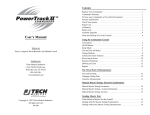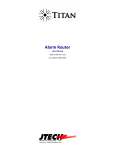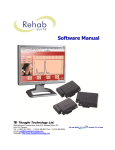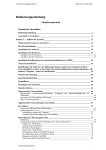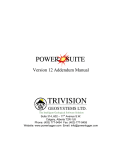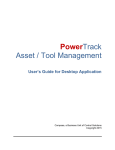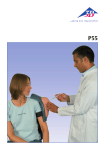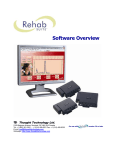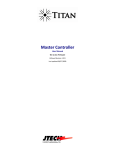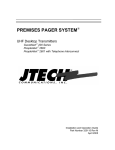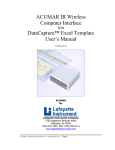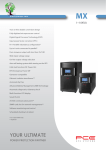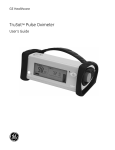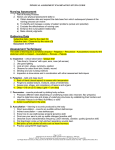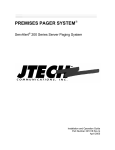Download Using the Commander Console
Transcript
User’s Manual Written by Tracy Livingston, David Bernardi, and Michael Carroll Published by JTECH Medical 470 Lawndale Drive, Suite G Salt Lake City, UT 84115 801-478-0680 www.jtechmedical.com Copyright © 2004 JTECH Medical All rights reserved. PN 680 Contents Commander Warranty . . . . . . . . . . . . . . . . . . . . . . . . . . . . . . . . . . . . . . . . . . .1 To have your Commander or PowerTrack II repaired . . . . . . . . . . . . . . . . . . .1 Features and Benefits . . . . . . . . . . . . . . . . . . . . . . . . . . . . . . . . . . . . . . . . . . .2 Check Your System . . . . . . . . . . . . . . . . . . . . . . . . . . . . . . . . . . . . . . . . . . . . .3 Proper Care . . . . . . . . . . . . . . . . . . . . . . . . . . . . . . . . . . . . . . . . . . . . . . . . . . .3 Calibration . . . . . . . . . . . . . . . . . . . . . . . . . . . . . . . . . . . . . . . . . . . . . . . . . . .3 Battery Life . . . . . . . . . . . . . . . . . . . . . . . . . . . . . . . . . . . . . . . . . . . . . . . . . . .3 Available Upgrades . . . . . . . . . . . . . . . . . . . . . . . . . . . . . . . . . . . . . . . . . . . . .4 Wrist and Desktop Use of the Console . . . . . . . . . . . . . . . . . . . . . . . . . . . . . .4 Using the Commander Console Conventions . . . . . . . . . . . . . . . . . . . . . . . . . . . . . . . . . . . . . . . . . . . . . . . . . .5 On/Off Button . . . . . . . . . . . . . . . . . . . . . . . . . . . . . . . . . . . . . . . . . . . . . . . . .5 Setup Mode . . . . . . . . . . . . . . . . . . . . . . . . . . . . . . . . . . . . . . . . . . . . . . . . . . .6 Test and Test Alt Modes . . . . . . . . . . . . . . . . . . . . . . . . . . . . . . . . . . . . . . . . .7 Testing Methods . . . . . . . . . . . . . . . . . . . . . . . . . . . . . . . . . . . . . . . . . . . . . . .8 Advanced Console Features . . . . . . . . . . . . . . . . . . . . . . . . . . . . . . . . . . . . .10 Reviewing an Exam . . . . . . . . . . . . . . . . . . . . . . . . . . . . . . . . . . . . . . . . . . .10 Statistics Definitions . . . . . . . . . . . . . . . . . . . . . . . . . . . . . . . . . . . . . . . . . . .12 Deleting an Exam . . . . . . . . . . . . . . . . . . . . . . . . . . . . . . . . . . . . . . . . . . . . .12 Reports . . . . . . . . . . . . . . . . . . . . . . . . . . . . . . . . . . . . . . . . . . . . . . . . . . . . .12 The PowerTrack II Dynamometer Care and Cleaning . . . . . . . . . . . . . . . . . . . . . . . . . . . . . . . . . . . . . . . . . . . . .13 Changing Testing Pads . . . . . . . . . . . . . . . . . . . . . . . . . . . . . . . . . . . . . . . . .13 Using the Dynamometer . . . . . . . . . . . . . . . . . . . . . . . . . . . . . . . . . . . . . . . .13 Manual Muscle Testing: General Considerations Manual Muscle Testing Precautions . . . . . . . . . . . . . . . . . . . . . . . . . . . . . . .14 Manual Muscle Testing - General Information . . . . . . . . . . . . . . . . . . . . . . . .14 Manual Muscle Testing Accuracy . . . . . . . . . . . . . . . . . . . . . . . . . . . . . . . . .14 Grading Muscle Tests When Should a Muscle Test Be Graded? . . . . . . . . . . . . . . . . . . . . . . . . . . . .15 Grading with the Muscle Testing Dynamometer . . . . . . . . . . . . . . . . . . . . . .15 Grading without the Muscle Testing Dynamometer . . . . . . . . . . . . . . . . . . . .16 Commander Warranty One-year Limited Warranty The Commander™ console and PowerTrack II™ dynamometer are designed to perform reliably and to meet specifications. In spite of diligence in manufacturing, eliminating malfunctions resulting from random component failure is impossible. Therefore, JTECH will at its option repair or replace the product with a new or reconditioned unit at no charge for a period of one year from the date of purchase. In view of the varied conditions in which the unit will be used, the Commander Console and PowerTrack II are sold “as is” and JTECH’s responsibility does not go beyond the terms set forth above. JTECH will not be responsible for medical expenses or any direct, indirect, or consequential damages arising from the use of this product. JTECH shall in no way be liable loss of revenue or profits resulting or alleged to result from use of this product. THIS WARRANTY IS MADE EXPRESSLY IN LIEU OF ANY OTHER WARRANTY, EXPRESS OR IMPLIED, INCLUDING AN IMPLIED WARRANTY OF MERCHANTABILITY OR FITNESS FOR A PARTICULAR PURPOSE. UNDER NO CIRCUMSTANCES SHALL JTECH BE LIABLE FOR ANY DIRECT, INDIRECT, INCIDENTAL, OR CONSEQUENTIAL DAMAGES. THE REMEDIES SET FORTH IN THIS WARRANTY SHALL BE THE ONLY REMEDIES AVAILABLE, EXCEPT AS SPECIFICALLY PROVIDED BY STATE LAW. NO PERSON HAS ANY AUTHORITY TO BIND JTECH TO ANY REPRESENTATION OR WARRANTY EXCEPT AS SPECIFICALLY SET FORTH HEREIN. To have your Commander or PowerTrack II repaired: 1. Contact JTECH Customer Service and describe the problem. After receiving a return authorization number, return the product to JTECH, including all accessories, postage paid and insured to JTECH. JTECH is not responsible for damages or losses incurred in shipping. 2. Submit proof of purchase and date. 3. Include a brief explanation describing the problem. Features and Benefits PowerTrack II™ Dynamometer: Produces very stable make or break tests. Reduces “roll-over” and tilting with a 1.8” high ergonomic design that fits in the palm. Uses snap-in-place Quick Connect system for changing accessory pads, which is much faster than old-fashion screw-on methods. TM Maintains accuracy even when force is applied off center with exclusive Axis Compensation “smart” load cell. TM Guarantees 99% force accuracy over the entire test pad area, compared to other products with off-center force accuracy from 94-96%. Call JTECH for accuracy report details. Includes both round and curved test pads. Commander™ Console: Easy-to-read 2” diagonal LCD. Operates during exams either as a wrist unit or as a desktop system when using the included longer cable. Gathers, stores, and analyzes up to 40 bilateral muscle strength tests, including up to four repetitions per side. Calculates CV and maximum force for each repetition. Documents outcomes assessment with the automatic bilateral deficit analysis. Helps determine consistency of effort in workers compensation and FCE exams. Test now, record later because the exam is stored in memory, even when Commander is turned off. Automatic audio prompts examiner for the next test in the series. Measures up to 125 pounds for very strong performers. Battery powered for portable operation. Test protocols can be customized according to number of tests, starting force, newtons/pounds and number of repetitions. Check Your System Your PowerTrack II Commander system should include the following parts: Commander Wrist Unit Round Pad PowerTrack II Dynamometer Curved Pad Short Cord Testing Chart Long Cord Worksheets Make sure the serial number on the PowerTrack II, located under the testing pad, matches the serial number on the Commander Console. If these numbers do not match, call JTECH Customer Service. Proper Care With proper care your new PowerTrack II Commander will provide many years of worry free use. Do not immerse the dynamometer or the console in water, place in an autoclave or sterilize with harsh disinfectant. To clean the housings, wipe with a soft, non-abrasive cloth moistened with clean water. To clean the display, use a nonabrasive dry cloth. Do not use cleaners. Avoid dropping or banging the instrument or console against hard objects. Do not stand on, apply more than 125 lb. or use the dynamometer for anything other than manual muscle testing. Failure to follow these policies will void the warranty. Calibration To ensure accuracy the PowerTrack II and Commander console have been factory calibrated with weights traceable to the National Institute of Standards and Technology. When turned on the Commander console automatically zero calibrates itself. Therefore, make sure the dynamometer test pad is turned up and no force is being applied when the Commander console is turned on. Any force applied to the dynamometer when the console is turned on will become the zero value and will result in inaccurate force readings. Battery Life The Commander console uses a standard 9 volt alkaline battery. The estimated battery life is 28 hours of operation. The Commander console should always be turned off when not in use to maximize battery life. (The console will automatically shut itself off after four minutes of inactivity.) NiCad batteries can be used, however, the active battery life will be reduced to approximately eight hours or less. When using a NiCad battery, completely drain the battery before recharging to prevent “memory” in the battery that will further reduce battery life. Available Upgrades The PowerTrack II™ can be used with the following upgrade products: Easy Docs Plus Software - Transfer Commander test data to you PC with this keyboard entry software. Easy Docs Plus Software maintains your test data, along with additional patient data, test data from other devices (such as inclinometers, goniometers, and static lift gauges) and results from your favorite questionnaires. With Easy Docs Plus you can quickly and easily create cutting edge data and narrative reports. Tracker™ Upgrade Package- PowerTrack II comes ready to plug into the leading Windows-based musculoskeletal evaluation software package. The upgrade package includes the Tracker Interface Box™ for connecting to a PC. The PowerTrack II™ dynamometer plugs into the PowerTrack II port of the Tracker Interface Box™ without any modifications. Tracker™ software automatically records test results with real-time force curves, analyzes statistics, charts comparisons to previous tests, works seamlessly with other Tracker diagnostic devices, and outputs data in a comprehensive report format. With the optional Tracker Impairment Software, the system automatically calculates motor deficit impairments from muscle testing results. For more information on upgrades, contact your JTECH sales representative or call JTECH at 1-800-985-8324 or 1-801-478-0680. Wrist and Desktop Use of the Console The PowerTrack II Commander system comes equipped with two cords for connecting the dynamometer to the console unit. The short cord is used when the Commander console is strapped to the examiner’s forearm. The longer cord is used when the Commander console is placed on a desktop or left in the case during testing. The cords connect to the console and dynamometer with telephone-jack plugs. To remove a cord, press down on the cord-jack’s plastic release lever and slide the end out of the receptacle. When installing a cord, make sure the jack “snaps” securely into place. NOTE: If a cord is damaged or lost, do not attempt to replace with a standard telephone cord as the wiring is not the same. Contact JTECH Customer Service for the correct replacement cord. Using the Commander Console Conventions This manual adopts the following convention throughout: Test Refers to one strength assessment that may include multiple repetitions and comparisons between the right and left side. For instance, testing elbow flexion with three repetitions for the right side and three repetitions for the left side is one test. Exam Refers to multiple tests. For example, testing elbow flexion, elbow extension, wrist flexion, and wrist extension could comprise one exam. On/Off Button ON / OFF Press the “ON/OFF” button once to turn the console on, press it again to turn the console off. Exams stored in memory are not erased when power is turned off. Holding the “ON/OFF” button down for two seconds clears all stored exams. The console shuts off automatically after four minutes of inactivity. Note: Make sure no force is applied to the dynamometer when turning the console on. When the console unit is turned on it will activate in either “Test” mode or “Review” mode, depending on whether an exam is stored in memory. If no exam is stored in memory the console will activate in Test mode ready for test #1. The active “mode,” in this case “TEST,” is displayed in this area. Test and repetition numbers are shown here. Side being tested is displayed on this line. Real-time force on dynamometer can be shown in pounds or newtons. Testing Mode If an exam is in memory when the console is turned on, Commander activates in “Review” mode. From this point you can review exam data, change to “Test” mode to finish testing, or delete the exam. Setup Mode Testing Defaults The Commander console enables you to use the “Setup” mode to control a variety of test parameters, such as the testing threshold, number of tests, number of repetitions per test, and force readings in pounds or newtons. Once test parameters are set, they become the defaults for the console. For example, if you set the number of repetitions to three, then the unit will test for three repetitions per side for every exam, unless you change the default. Default settings do not change when the unit is turned off or when an exam is deleted. Defaults can only be reset manually. Setting Defaults Three buttons are used when setting console defaults: TEST CONT. (SETUP), NEXT (SELECT) and REVIEW (CHANGE). The buttons function as follows: TEST CONT. (SETUP): Press this button to move through the console modes until “Setup” is displayed. It is also used to exit “Setup” after setting parameters. NEXT (SELECT): Use this button to advance through the test parameters. REVIEW (CHANGE): This button changes the parameter setting. Press this button until console is in “Setup” mode. After parameters are set, use this button to exit back to “Test” mode. While in “Setup” mode, use this button to advance through parameters. When a parameter is displayed, use this button to change the default setting. Adjustable Defaults The PowerTrack II Commander console allows you to control the following default parameters: THRESHOLD: This setting determines the amount of force that must be exerted against the dynamometer before the console begins recording data. This setting is used to avoid inadvertently beginning a test. It can be set at 1, 3, 5, 10 or 20 pounds. TEST: Controls the number of tests available for an exam. The console automatically goes into “Review” mode when the number is reached. It can be set from 540 in increments of five. REP: Sets the number of repetitions per side per test. It can be set from 1-4. A minimum of two repetitions is required for CV calculations. LBS (N): This parameter controls whether force readings are in pounds or newtons. Test and Test Alt Modes Tests are conducted using either the “Test” or “Test Alt” modes. (How the modes are used is described below.) To conduct a test, apply pressure on the dynamometer. Test recording begins when the default threshold force is exceeded. A test ends when force on the dynamometer drops back below the threshold. The display then indexes to the next repetition in the series. After all repetitions for a test are completed, the display indexes to the next sequential test number. Continue testing with this method until all tests are recorded in memory. Repetitions for a Test The Commander console can record up to four strength repetitions per side for each test. The repetition order is selected by either of two methods: Same Side Repetition Order: When “Test” mode is displayed, the unit prompts for all right side repetitions first, then all left side repetitions. For example, if the default is two repetitions, the test sequence in “Test” mode is: TEST 1 REP 1 RIGHT TEST 1 REP 2 RIGHT TEST 1 REP 1 LEFT TEST 1 REP 2 LEFT TEST 2 REP 1 RIGHT TEST 2 REP 2 RIGHT ....etc. Helpful Hint: If unilateral testing is required, the right side can be tested and the left side skipped by pressing the “NEXT” button, or the right side can be skipped by pressing “NEXT” and testing the left side. Alternating Sides Repetition Order: When “Test Alt” mode is displayed, the repetitions alternate between right and left side as follows: TEST 1 REP 1 RIGHT TEST 1 REP 1 LEFT TEST 1 REP 2 RIGHT TEST 1 REP 2 LEFT TEST 2 REP 1 RIGHT TEST 2 REP 1 LEFT ....etc. This method can be used if submaximal effort is indicated. By mixing up the left and right side routine, the subject may have a more difficult time repeating the results on each side as indicated by the coefficient of variation. Testing Methods The Commander console can store up to 40 tests in memory complete with data for all repetitions and statistics. In order to easily record multiple tests the Commander uses Automatic Indexing™. This method automatically indexes the display to the next test in the series without requiring you to press any buttons. For example, after completion of all right and left side repetitions of test 1, the display indexes to TEST 2 REP 1 RIGHT. NOTE: After completing a test, Commander prevents inadvertent deletion of tests previously stored in memory by indexing to the next test not completed. For example, if test 2 was completed previously, after test 1 is completed Commander will skip test 2 and index to test 3. Sequential Testing Method This method always begins with test 1 using Automatic Indexing™ to proceed from test 1 to test 2, etc. Mark the muscle groups on the exam worksheet with the corresponding test numbers from the display. For example, a muscle testing exam is completed in the following order: elbow flexion, elbow extension and shoulder abduction. Before starting the exam, “1” is placed on the elbow flexion line of the worksheet, “2” on elbow extension and “3” on shoulder abduction. Then either during the test or after, test data for the test number on the Commander unit is recorded on corresponding line of the worksheet. This method facilitates documentation during exams by allowing you or staff to complete the worksheet after the exam is finished. In this example, test 2 would correspond to elbow extension on the worksheet. Helpful Hint: Since the display indexes past old tests stored in memory, this method is recommended only if all previous tests have been erased. Assigned Testing Method This method uses the default test numbers assigned to the test on the worksheet and flip chart. The assigned numbers on the worksheet and chart correspond to the test numbers selected on the Commander console. Therefore, Automatic Indexing™ should not used with this method. Instead, use the “NEXT” button to select the test number on the Commander unit that correspond to the test number on the worksheet or chart. In this example, the test number on the display corresponds to the pre-printed test number on the worksheet. This method eliminates the necessity of writing the test number on the worksheet before or during the exam as with the Sequential Testing Method. Also, when using this method with Commander Downloader software, the names of the muscle groups are automatically assigned to the tests. Helpful Hint: You should be careful to select the proper test number before starting a test, and be extremely careful not to inadvertently continue with the next automatic test in the series. If you inadvertently begin a test at the next test number instead of the worksheet number because of Automatic Indexing™, delete the test by pressing “REVIEW” and holding it while you press “Redo.” Advanced Console Features REDO REVIEW NEXT REDO REVIEW TEST CONT. REDO REVIEW NEXT Press “REDO” to test the last repetition again. This feature is helpful if the current test was started inadvertently, was done incorrectly or was for practice. Redo a test - If after reviewing exam results, you determine that a test (all right and left repetitions) needs to be redone, press “REVIEW.” Once in “Review” mode, press “NEXT” until the correct test number is displayed. Press and hold “REVIEW” and press “REDO.” Repeat the test. Important Note: When using “REDO” for a test, the entire test, including repetitions for the right and left side, are deleted and must be redone. Review last repetition - To review the measured force for the last repetition, press “REVIEW” after the repetition is complete. To review other statistics associated with the test, continue pressing “REVIEW,” and the display will scroll through all available statistics. To continue testing with the next repetition, press “TEST CONT.” To erase the repetition and start over, press “REDO.” Deleting a test - Press “REVIEW” then press “NEXT” until the correct test number is displayed. While holding the “REVIEW” button down, press “Redo.” The entire test, including all right and left side repetitions, will be deleted. REDO Reviewing an Exam REVIEW NEXT REVIEW An exam can be reviewed at any time, either during testing or after, by pressing the “REVIEW” button. The last completed repetition will be displayed. To review other tests within the exam, press “NEXT” to advance to the next test with recorded data. When advancing through tests, the Commander display shows the test number with the right side repetition. To see left side repetitions and additional statistics press “REVIEW.” Statistics To scroll through and review all the statistics for the displayed test, continue pressing “REVIEW.” In the following example, the statistics for test 4 are displayed in the order they will appear by pressing “REVIEW.” For this example, the number of repetitions was set at two: REVIEW REVIEW Maximum Force Repetition 1 Right Side Maximum Force Repetition 2 Right Side REVIEW REVIEW CV Right Side Maximum Force Repetition 1 Left Side REVIEW REVIEW Maximum Force Repetition 2 Left Side CV Left Side Bilateral Deficit Left Side After all statistics have been selected, the display circles back to the beginning. Selecting the next test to review: To view the next test, press “NEXT.” The display indexes only to test numbers with data. Statistics Definitions LBS: In “Test” and “Test Alt” modes, LBS displays force against the dynamometer in real-time. In “Review” mode, LBS shows maximum force on dynamometer for the displayed repetition. % CV: The coefficient of variation for all the repetitions for the indicated side using the n-1 method. %Deficit: Bilateral deficit indicating weakness of one side compared to the other. Deleting an Exam To erase an exam, turn the Commander console on, then press and hold the “ON/OFF” button for a minimum of two seconds, or until the unit reactivates. When the button is pressed unit console will beep and turn off indicating data has been erased. Note: All test default values will be retained. Reports Muscle testing reports from PowerTrack II Commander can be created several ways: 1. Use the supplied worksheets to create hard-copy documentation. 2. Optional Easy Docs Plus Software from JTECH Medical is an efficient way to generate reports using your PC. With Easy Docs Plus you enter muscle testing data into the software using your keyboard. Easy Docs Plus then maintains the data, calculates statistics, produces progress bar graphs, generates data reports and allows you to print narratives from Microsoft Word. Manual Muscle Testing: General Considerations Manual Muscle Testing Precautions The following are general guidelines to minimize risk of injury to the patient. Please note that these guidelines are not comprehensive because covering all possible conditions would be impossible. Therefore, final responsibility for the risk of injury to the patient lies with the examiner. 1. Force increase should be gradual. 2. Patient should be CLOSELY observed for any evidence of pain. The test should be stopped immediately if this occurs. Manual Muscle Testing - General Information Manual muscle testing or grading should be performed when neurological problems at the nerve root or peripheral nerve are suspected, or if disease or disuse affects the muscles. Manual muscle testing can help identify specific nerve motor function. Bilateral testing indicating a weakness in several muscles may further substantiate disease or injury involving nerve roots or peripheral nerves, as long as disuse or disease of the fibers of the muscle or disorders of the higher levels of the central nervous system are ruled out. Manual muscle testing should never be used alone to diagnose, but should be used in conjunction with other diagnostic testing tools such as the Dualer dual inclinometry system or Commander Algometer pain/pressure testing. If a rehabilitation program is initiated, bilateral manual muscle testing should be completed at periodic intervals along with other diagnostic testing to document treatment efficacy. Manual Muscle Testing Accuracy General rules must be followed to insure repeatability and accuracy when using the PowerTrack II manual muscle tester. 1. If testing bilaterally, the muscles and/or tendons that normally cause the motion should be palpated bilaterally to help identify substitution by muscles other than the prime movers. Adjust patient stabilization or position until substitution is eliminated. If substitution continues, document the nature of the substitution. 2. The lever arm length between the attachment point of the muscle and the PowerTrack II dynamometer must be the same between repetitions and sessions. Make sure the unit is placed at the same location for each repetition and test. For multiple repetitions, better accuracy is achieved if the unit remains placed on the body during all repetitions. 3. Ensure the starting point for breaking action is at the same range of motion position for each test and repetition. This is necessary because of the wide variations in force the prime movers can oppose depending on the starting point of breaking action. 4. Determine the plane of motion of the segment and ensure that the PowerTrack II dynamometer is not sideways or off axis to this motion. Additionally, apply force in the direction of motion. 5. Always build up resistance smoothly until the position is broken. In general the break should occur within 2-3 seconds. Prolonging the time to break may introduce fatigue. Shorter breaks are at higher risk of re-injury or may not allow for buildup of maximum contraction. For difficult to break segments, two hands may be required. Grading Muscle Tests Traditionally, muscle testing uses a grading system for documentation and standardization. In the traditional system muscle test grades range from 4/5 “Good/Normal” to 0/1 “None/Slight Contraction.” With the introduction of the PowerTrack II manual muscle tester and the JTECH’s IsoTrack isometric testing station, the system has been modified slightly to encompass the additional diagnostic data available. When Should a Muscle Test Be Graded? Using the traditional subjective method of muscle testing, every test needed to be graded just for the purpose of documentation. With Commander’s PowerTrack II muscle testing systems, the actual force values are automatically recorded, so the need to grade every test is greatly reduced. As a result, tests conducted for purposes like initial screenings and monitoring progress are not required to be graded. In addition, tests not graded during the examination, or immediately after, can be graded at a later date if necessary using the test values recorded on the worksheet. According to the AMA Guides to the Evaluation of Permanent Impairment, a muscle test must be graded if it is to be used as part of an impairment rating. Tests where the patient cannot exert force against the dynamometer or where the use of a force gauge is infeasible should also be graded to provide documentation of the test. Grading with the Muscle Testing Dynamometer Grade 4 or 5: These grades are assigned if the patient can provide slight to full resistance against the dynamometer. 1. Patient moderately resists against the examiner. If any resistance occurs, then the patient has enough strength to provide resistance against the muscle testing dynamometer. If the patient is too weak to provide any resistance, grades 0/1, 2, or 3 should be assigned based on test results obtained without using the dynamometer. 2. Place the patient in the recommended position and conduct a test using the dynamometer. Repeat for a minimum of three repetitions to ensure accuracy and repeatability. 3. Repeat the test for the opposite side. 4. If a strength deficit greater than 15% exists bilaterally when tested with the dynamometer, the weaker side should be assigned a grade 4. As noted earlier, a grade is required if the test is to be included in an impairment report. Grading may be skipped if all that is needed is the bilateral strength comparison for showing progress, justifying treatment, or determining the injured/diseased nerves. Grading without the Muscle Testing Dynamometer If the subject does not have sufficient strength to resist against the force gauge or a force gauge test is infeasible, then the following grading system can be used. Grade 4/5 - Good/Normal: Moderate to full resistance against the examiner. Grade 3 - Fair: Partial to complete motion against gravity. Grade 2 - Poor: Partial to complete motion with gravity removed. Grade 0/1- Zero/Trace: No contraction to slight contraction.

















